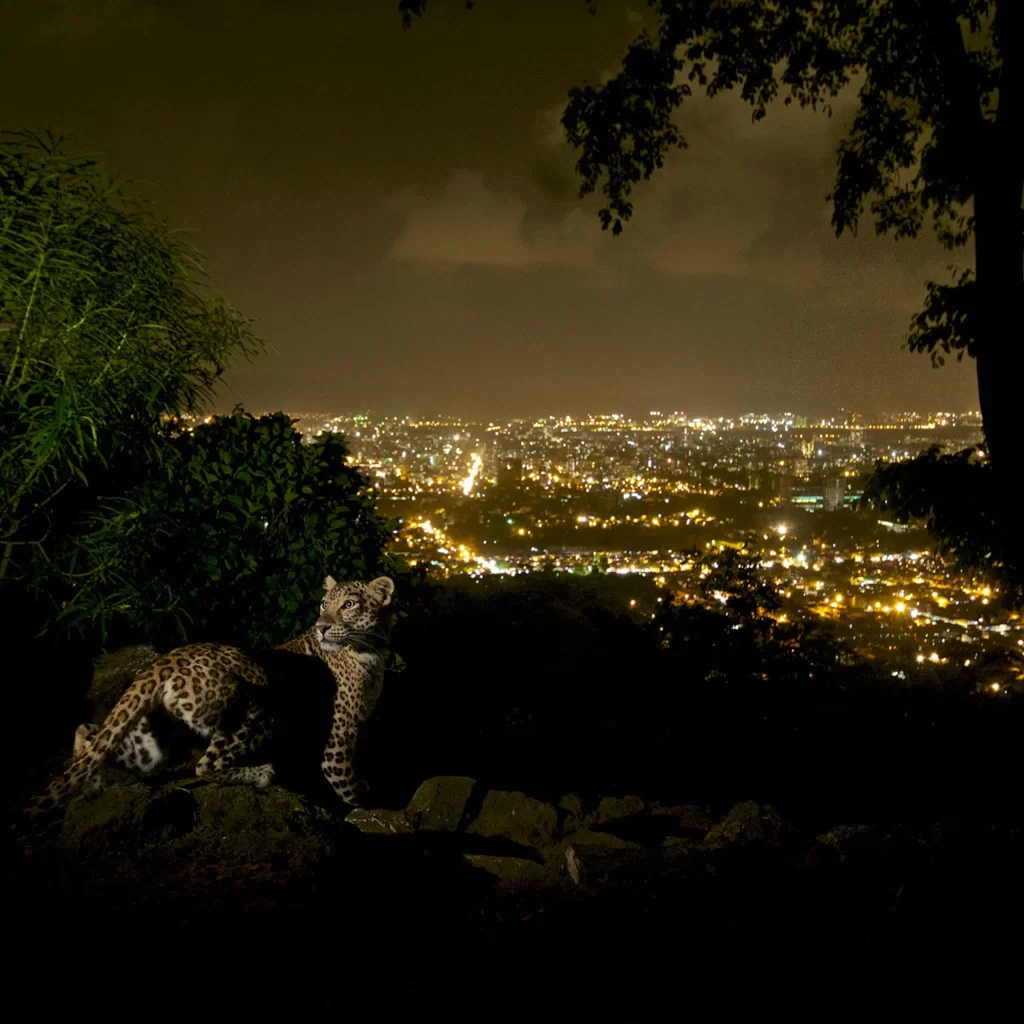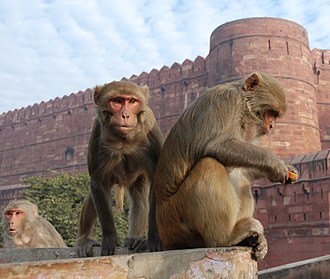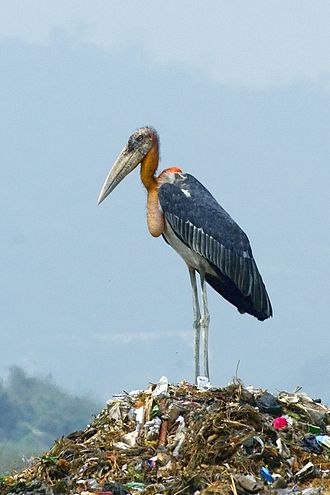Look out of your window. What do you see? Power lines against the backdrop of buildings, overflowing drains and garbage bins, busy roads with traffic, some trees in between abandoned infrastructures, people hustling, stray animals scrounging… The first impression of a city. Still coexistence is possible!

Look closer…You may spot a black drongo swinging on the clothesline, hear an Asian koel trying to woo his potential mate, maybe a pair of spotted doves perched on the edge of a flower pot in your balcony garden…
If you live in a quieter neighbourhood, you may see a common toad hopping away in your garden, or dragonflies hovering around with the characteristic buzz of their helicopter-ish wings. You might look up from a book you are reading, to catch a crow staring at you from the nearest branch, head tilted. You might even catch a barn owl couple peering at you from the crevices of an old abandoned building opposite your house…
The Urban Challenge
Cities, therefore, are not only about the humdrum of vehicular traffic and humans leading a robotic existence. It is also about the green spaces and the wildlife which live among us and around us. An ‘urban’ area can be simply defined as having an increased density of human-created structures and people relative to areas surrounding it (Adams & Lindsay, 2011), as well as a complex habitat mosaic of buildings, streets, and green spaces (Werner, 2011). It is here, right under our noses, that an increasing number of wildlife species are adapting, growing and embracing the urbans as their new habitat, sometimes even depending on us for their survival.
If we look at trends for urbanisation, we will find that only 15% of the world’s population lived in towns and cities in 1900 and by 2014, it rose to 54%. By 2050, it is expected to increase by 72%, i.e., from 3.6 billion to 6.3 billion (Zhang, 2015). Since it is clear that urbanisation is taking over the planet rapidly, the future will undoubtedly see more evolution of wildlife to adapt to urban areas for survival. If that happens, we must have a proper understanding of urban species, their food habits, habitat and other ecology if we want to co-exist. Co-existence may seem like a utopian term for the ‘urban tongue’, especially when we are succumbing to the “rat-race” but see rats as mere pests, and use terms like “hare-brained” and “monkeying around” to describe unintelligent people and people up to no good- we sure use too many animal references for a species which doesn’t try to understand the neighbours they share space with!
Our Behavior impacts theirs
Urban wildlife may utilise human food sources like garbage or pet food, are typically omnivorous and generalists (meaning they have broad dietary and habitat preferences), have a higher tolerance of human presence and can adapt better to environmental disturbances. They can usually be classified into avoiders, utilisers and dwellers (Fischer et al, 2015). Wildlife living in cities and towns mostly exhibit commensalism, which the Oxford Dictionary defines as “an association between two organisms in which one benefits and the other derives neither benefit nor harm”, in this case meaning that the animals benefit from living in proximity to humans without overtly harming them. However, depending on how the wildlife species use urban spaces, and utilise the resources available, there can be profound impacts on the kind of interactions that happen between them and humans. It will be easier to categorise these interactions into positive (e.g., leaving water out for birds to drink), negative (killing snakes because we ‘think’ they are venomous and might kill us) or neutral (observing a dove build its nest and lay eggs in your balcony from a safe distance without intervening).

The Importance of Urban Wildlife Perception
It is the negative interactions which we hear about most often, which we term as “conflict”. But if our perceptions towards these species change, there is a high chance that these conflicts can be avoided and mitigated. For example, predatory birds and snakes contribute effectively to rodent control, but human tolerance of snakes in urban areas tends to be low. This is not surprising, as over a 1 million people have lost their lives due to snakebites since the turn of the century in India.
The age-old ‘snakes in the city’ saga doesn’t seem to get old enough. We end up villain-ising the socially awkward snakes whenever we happen to catch a mere sight of them, not thinking for a moment that they might be non-venomous, and will leave on their own. This has mostly led to unfortunate killing of snakes in ‘defence’ or unnecessary relocation of snakes minding their own business (termed as ‘rescues’), because we are unaccustomed to sharing space with the reptiles. Snakes have no more wish to hang out with us than we want to hang out with them, believe me. In fact, many snakes fall victim to the illegal wildlife trade. This is due to the unethical and unfortunate practice of snake charming is still common. Interestingly there is no alternative term to describe positive human-wildlife interactions, probably reflecting the significant bias towards negative interactions in the literature.
What goes around, comes around!
Sometimes, what seems like a positive interaction might have negative consequences leading to conflicts in future. Let us take monkeys as an example- we feel good feeding rhesus macaques outside temples, to a point when these macaques have become dependent on humans for food.
Now, they have been reduced to robbers, gali ka gundas and expert thieves who can pick locks, open fridges, turn on taps and smoothly open packets of chips and chocolates, and it is us to blame for this ‘monkey menace’. I must remind you; it is illegal to feed wildlife, or kill wildlife for that matter (in the case of snakes).
Each of these species have their own role to play in the man-made ecosystem, just like they do in natural ecosystems, and any interference can have serious repercussions. For example, the decline in vulture populations in India has led to dramatic increases in feral dog populations in urban areas, which has increased the competition and predation on wildlife as well as risk of rabies transmission to humans (Markandya et al, 2008).
Vultures are efficient scavengers and are natural carcass disposal agents in Asia; their decline meant increase in abundance of carcasses, coinciding with increase in feral dog populations, especially at the carcass dump sites (Ogada et al, 2011). However, the vulture crisis was of our own doing!
Our Waste Menace
Humans can profoundly affect species survival, population structure, reproduction, behavior, and evolution in urban areas (Marzluff, 2001), and we can see direct evidence of that in the waste we generate. You might see birds building their nests with materials which surely weren’t in their checklist decades ago- broken cable wires, synthetic ropes and threads, discarded craft materials, beads, etc.
More concerning, is how urban birds like common myna or cattle egrets forage in chips packets and aluminum foiled oily food remains, which we nonchalantly discard. Sometimes we are completely unaware of the consequences which our actions might have on the urban wildlife, even if our intentions are good. For example, it is endearing to see visitors in temple ponds in Assam, feeding turtles with biscuits, bread, puffed rice etc, but not caring enough to dispose of the wrappers in garbage bins, causing them to fly and land in the pond waters, posing a serious threat for the turtles.

The Importance of Citizen Science
We need to understand how exactly we are endangering the lives of urban critters because of our city structures and lack of awareness. Humans cannot be left out of the equation if we want to save biodiversity, and this leads to a critical necessity for citizen science. It is indeed high time, that we start paying close attention to our non-human neighbours, not only because of the worrisome examples I have put forward or because of the close proximity we share with them, but also because there is ample evidence that we are becoming disconnected from nature and it is negatively impacting our health in more ways than we can imagine (read Sekercioglu, 2002).
Public parks, open spaces, terrace gardens, and green spaces not only provide habitat for wildlife, but also expose us to nature in our own backyards. There are many opportunities in urban environmental education that can enhance the lives of citizens while also fostering an appreciation for conservation. Fortunately, online there are many opportunities to be involved in environmental education and citizen science.
What is “The False Trail”?
We can start educating ourselves right from our homes, so that we can each do our bit to save urban biodiversity. People protect what they value, and with this very objective, I have initiated The False Trail, a citizen-science platform to raise awareness for urban wildlife. The False Trail hopes to instil curiosity among citizens to know more about their non-human neighbours, and encourages them to share their stories, photographs and experiences with urban wildlife (the good, the bad, the sad, the undecided), It also introduces people to the urban species living around us, covering interesting facts about their food habits, habitat ecology, behaviour and identification tips. It is a humble attempt to make citizens care enough about their city wildlife to make an effort to save them. As nature writer Esther Woolfson says, “How will future generations learn about the value of the life around them? How will they know what they have lost?” (Woolfson, 2013)
Contact Details
WordPress: www.falsetrail.wordpress.com, Facebook: https://www.facebook.com/thefalsetrail, Instagram: https://www.instagram.com/thefalsetrail_/, Email: wildgene1994@gmail.com, WhatsApp Business: +91-7002110985
Written by: Debanngini Ray
References
- Fischer, J.D., Schneider, S.C., Ahlers, A.A., & Miller, J.R. (2015). Categorizing wildlife responses to urbanization and conservation implications of terminology. Conservation Biology.
- Markandya, A., Taylor, T., Longo, A., Murty, M. N., Murty, S., & Dhavala, K. (2008). Counting the cost of vulture decline—An appraisal of the human health and other benefits of vultures in India. Ecological Economics, 67, 194-204.
- Zhang, X.Q. (2015). The Trends, Promises and Challenges of Urbanisation in the World. Habitat International, 54.
- Ogada, D., Keesing, F., & Virani, M. (2011). Dropping dead: Causes and consequences of vulture population declines worldwide. Annals Of The New York Academy of Sciences, 1249, 57-71.
- Marzluff, J., & Clucas, B. (2011). Coupled Relationships between Humans and other Organisms in Urban Areas.
- Adams, C., & Lindsey, K. (2011). Chap 2.5 Anthropogenic Ecosystems: The Influence of People on Urban Wildlife Populations in J. Niemela, et al (Ed.). Urban Ecology: Patterns, Processes and Applications. New York, Oxford University Press.
- Woolfson, E. (2013). Field Notes from a Hidden City: An urban nature diary. Granta Publications
- Sekercioglu, C. (2002). Impacts of birdwatching on human and avian communities. Environmental Conservation, 29, 282-289. Retrieved from https://rb.gy/5nbolb
- Werner, P. (2011). The ecology of urban areas and their functions for species diversity. Landscape and Ecological Engineering, 7, 231-240.
